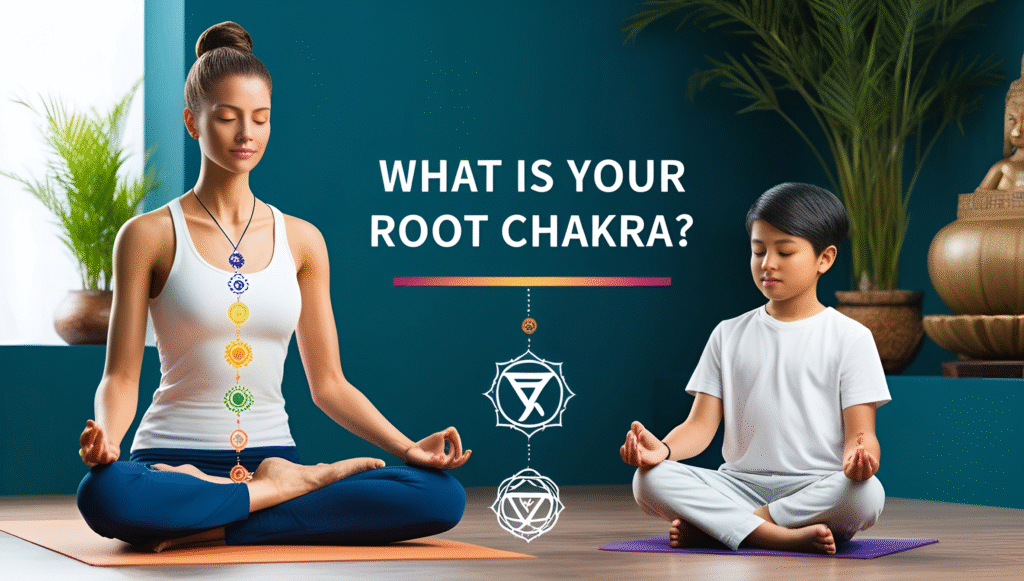
What Is Your Root Chakra? Understanding Its Role and Importance
Introduction
The concept of chakras has been an essential part of many cultures, especially in spiritual and wellness practices. Among the seven primary chakras, the root chakra holds a special place as the foundation of our energy system. In this blog post, we will explore what your root chakra is, its significance, characteristics, and how to balance it for a healthier and more grounded life.
What is the Root Chakra?
The root chakra, known as Muladhara in Sanskrit, is the first chakra in the body’s energy system. It is located at the base of the spine, and its primary purpose is to establish our sense of security and stability in the physical world. Here’s a closer look at its features:
- Color: Red is the color associated with the root chakra. It symbolizes vitality, energy, and grounding.
- Element: The root chakra corresponds to the earth element, which represents solidity, stability, and nourishment.
- Physical Location: Situated at the base of the spine, the root chakra is connected to the adrenal glands, which influence our fight-or-flight response.
- Key Qualities: This chakra governs our feelings of safety, security, survival instincts, and connection to the physical body. It lays the foundation for our overall well-being.
Characteristics of a Balanced Root Chakra
When your root chakra is balanced, you may experience several positive qualities, such as:
- Feelings of Safety: A strong sense of security in your environment and relationships.
- Groundedness: An ability to stay present and connected to the earth.
- Stability: Emotional stability, resilience, and a balanced perspective on life’s challenges.
- Physical Vitality: Good physical health and energy levels.
- Confidence: Trust in yourself and your abilities to navigate life’s challenges.
Signs of an Imbalanced Root Chakra
An imbalanced root chakra can lead to various issues, both physical and emotional. Common signs of imbalance include:
- Anxiety and Fear: Persistent feelings of insecurity and fear for your safety or well-being.
- Restlessness: Difficulty feeling grounded or settled.
- Physical Symptoms: Issues such as lower back pain, fatigue, and digestive problems.
- Low Self-Esteem: Doubts about your self-worth or ability to succeed.
- Disconnection: Feeling disconnected from your body or the world around you.
Recognizing these signs can help you take steps toward balancing your root chakra.
How to Balance Your Root Chakra
Balancing your root chakra is essential for maintaining overall well-being. Here are several effective techniques:
1. Yoga Practices
Yoga is a powerful way to connect with your body and balance the root chakra. Poses like Mountain Pose, Warrior I, and Tree Pose can help you feel grounded and secure. These poses engage your legs and lower body, strengthening your connection to the earth.
2. Meditation
Meditation focused on the root chakra can enhance your grounding. Visualize a red light at the base of your spine, expanding with each breath. As you meditate, focus on feelings of safety and security.
3. Breathwork
Breathwork, or pranayama, helps to center your energy. Practice deep, intentional breathing, inhaling through the nose and exhaling through the mouth. This process calms the nervous system and promotes grounding.
4. Grounding Techniques
Spend time in nature to connect with the earth. Walk barefoot on grass, soil, or sand to feel grounded. You can also use grounding crystals, like hematite or red jasper, to enhance your connection to the earth.
5. Affirmations
Positive affirmations can reinforce feelings of safety and stability. Repeat phrases like “I am safe and secure” or “I am grounded and supported” to help shift your mindset.
The Importance of Your Root Chakra
Understanding what your root chakra is and its significance can transform your overall well-being. A balanced root chakra not only supports your physical health but also enhances your emotional resilience. It lays the foundation for personal growth, allowing you to pursue your goals with confidence.
When your root chakra is open and balanced, you may find it easier to navigate life’s challenges. You will feel more grounded and connected to your surroundings, fostering a sense of belonging and stability.
FAQs
Q1: How do I know if my root chakra is blocked?
Signs of a blocked root chakra include anxiety, restlessness, and physical issues like lower back pain. You may also feel disconnected from your body or your surroundings.
Q2: Can anyone balance their root chakra?
Yes, anyone can work on balancing their root chakra. Incorporating yoga, meditation, and grounding techniques into your routine can be beneficial.
Q3: How often should I practice root chakra techniques?
You can practice root chakra techniques as often as you feel necessary. Aim for at least a few times a week to maintain balance and stability.
Q4: What crystals are good for the root chakra?
Crystals such as hematite, red jasper, and obsidian are excellent choices for grounding and balancing the root chakra.
Q5: Can diet affect my root chakra?
Yes, a balanced diet can support your root chakra. Foods that are red, such as beets and tomatoes, as well as grounding foods like root vegetables, can be particularly beneficial.
Conclusion
Understanding what your root chakra is and its significance is essential for achieving a balanced life. By incorporating practices that promote grounding and stability, you can enhance your overall well-being. Embrace the journey of exploring your root chakra, and empower yourself to create a more secure and fulfilling life.
